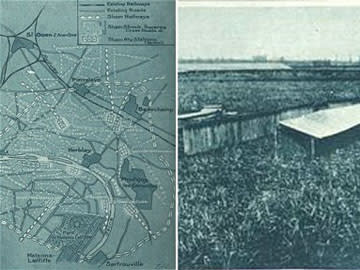 The Upshot
The UpshotDuring World War I, France built a fake Paris to fool Germany

During World War I, the French created a dummy version of Paris to the city's immediate north. The plan was to fool German planes into thinking the Potemkin city was the real thing, thus leaving the City of Lights untouched by bombs.
London's Daily Telegraph explains that the fake city wasn't just a bunch of cardboard cutouts. Far from it. There were "electric lights, replica buildings, and even a copy of the Gare du Nord—the station from which high-speed trains now travel to and from London."
The painters went so far as to use paint to create "the impression of dirty glass roofs of factories." Fake trains and railroad tracks were lit up as well. There was a phony Champs-Elysées.
It stands to reason that in the early 20th century, the plan could have worked. "Radar was in its infancy in 1918, and the long-range Gotha heavy bombers being used by the German Imperial Air Force were similarly primitive," the Telegraph notes. "Their crew would hold bombs by the fins and then drop them on any target they could see during quick sorties over major cities like Paris and London."
Fortunately, the plan was never put to the test. The war ended before the fake city was finished. Both the real Paris and the fake one escaped significant damage.The fake version has long since disappeared, though photos of its remain.
The renewed interest in the unusual tactic is thanks in large part to Armistice Day, also known as Veterans Day. On November 11, 1918, the Allied Forces and Germany declared the end of "the war to end all wars."

